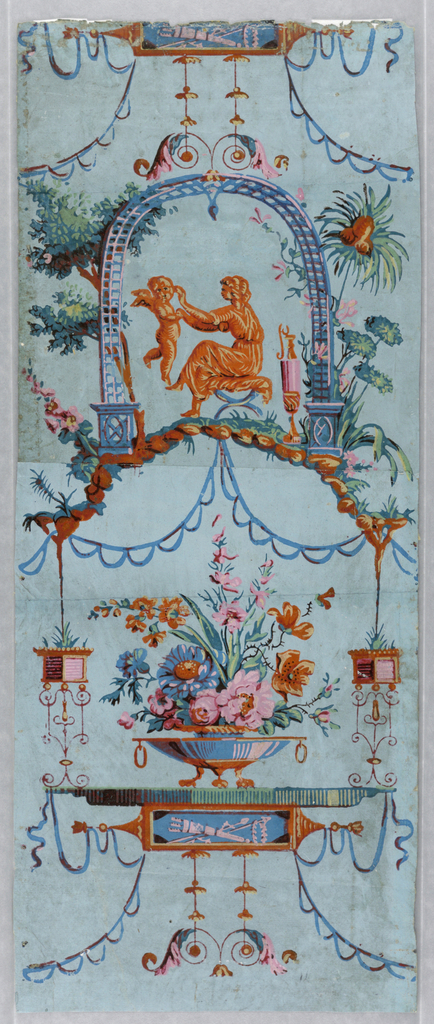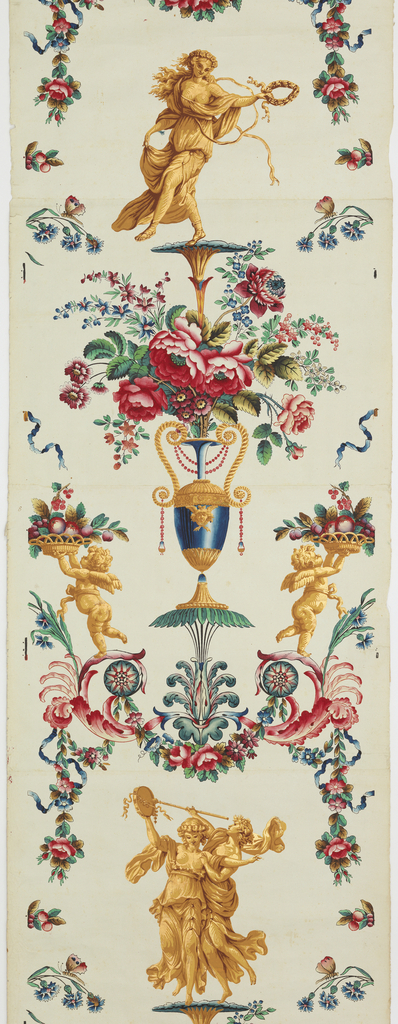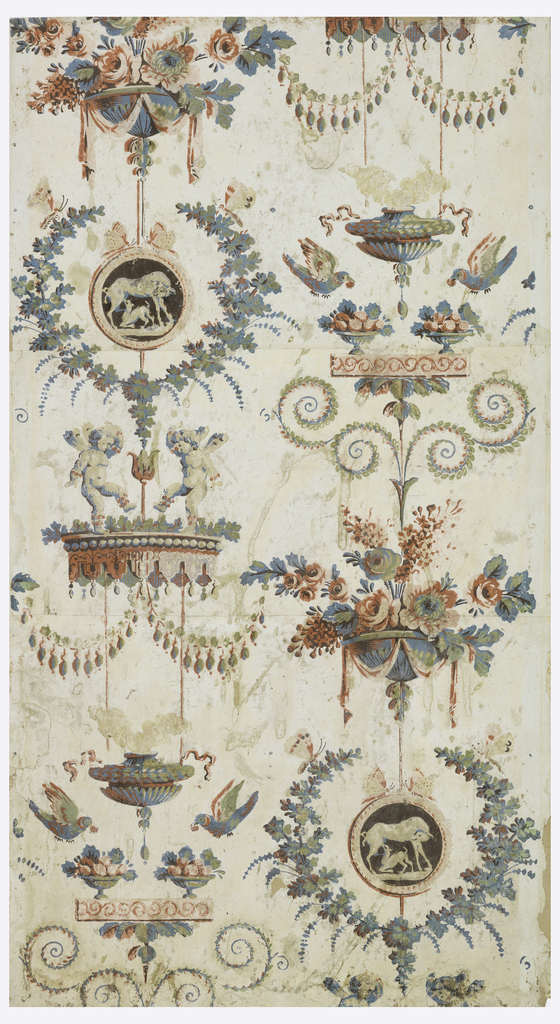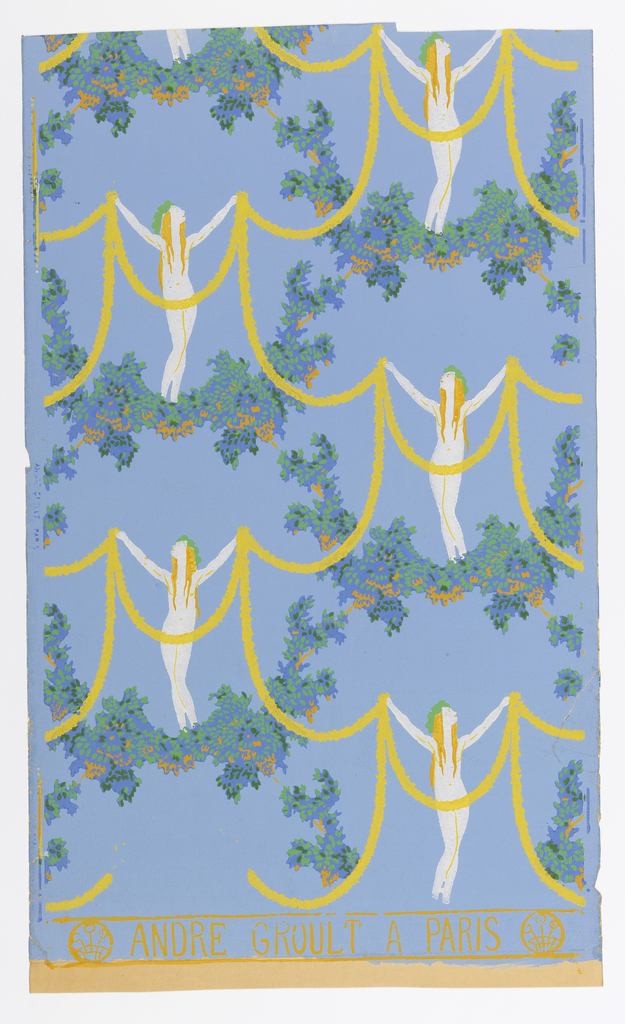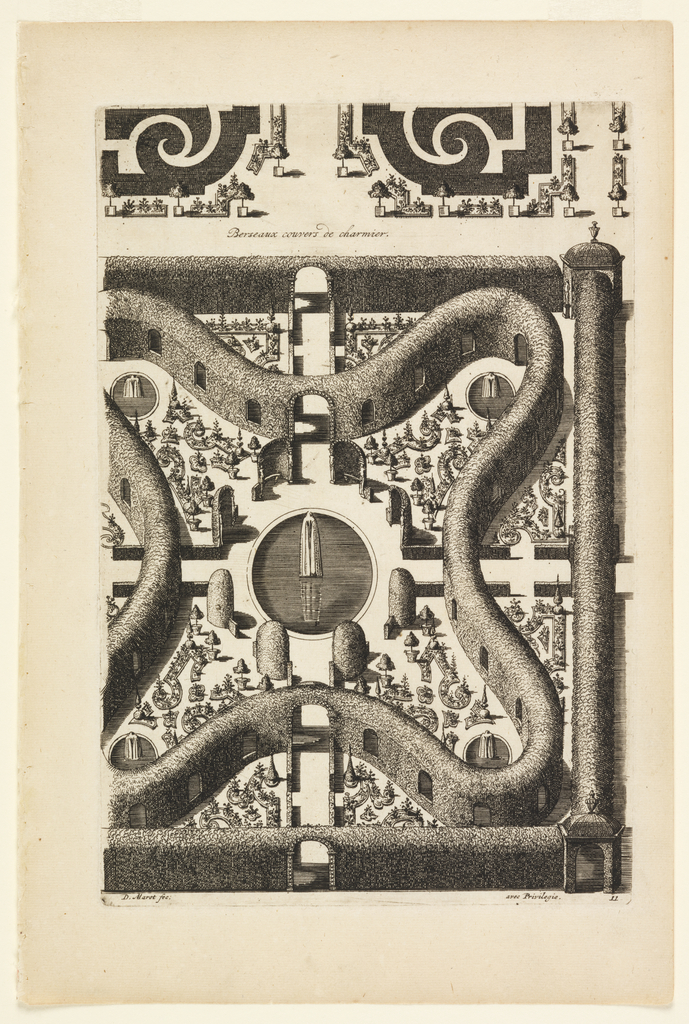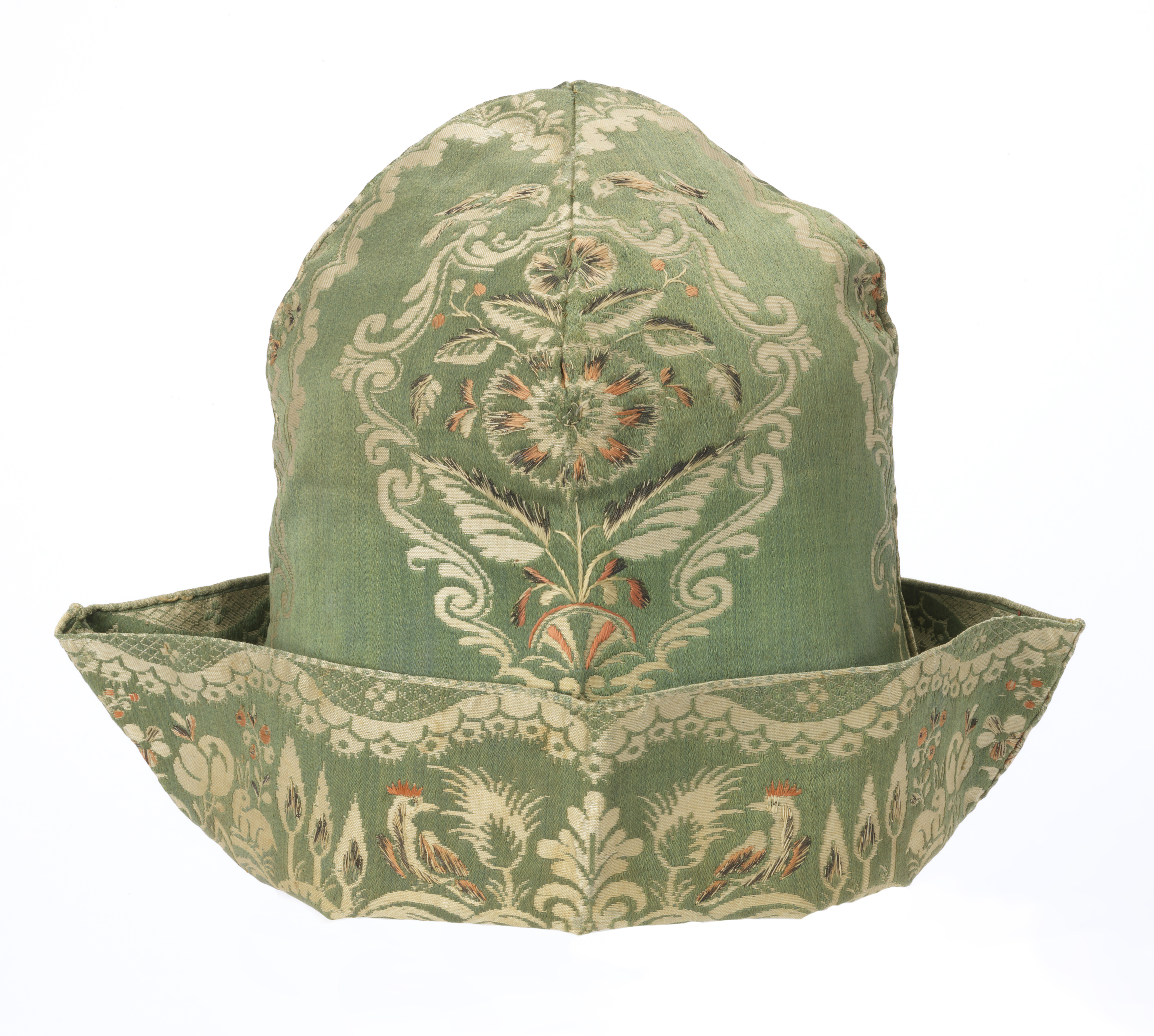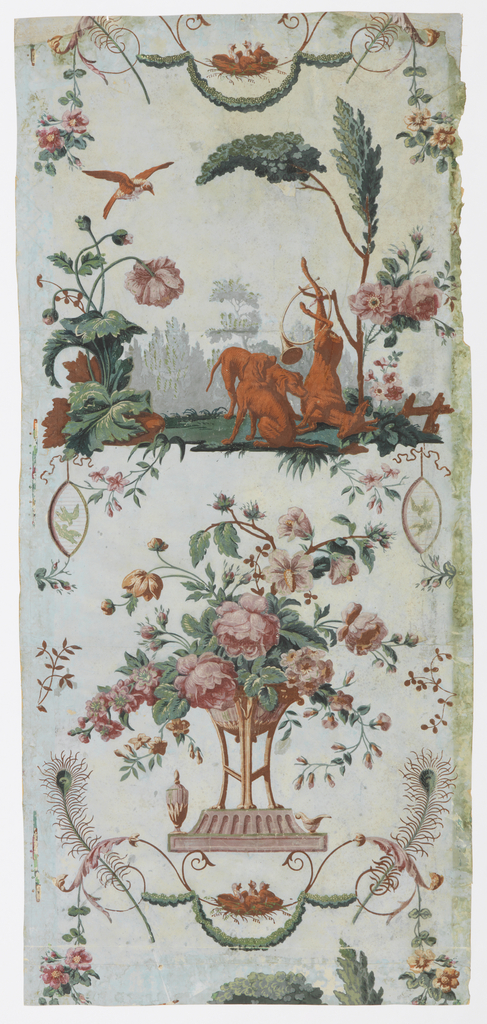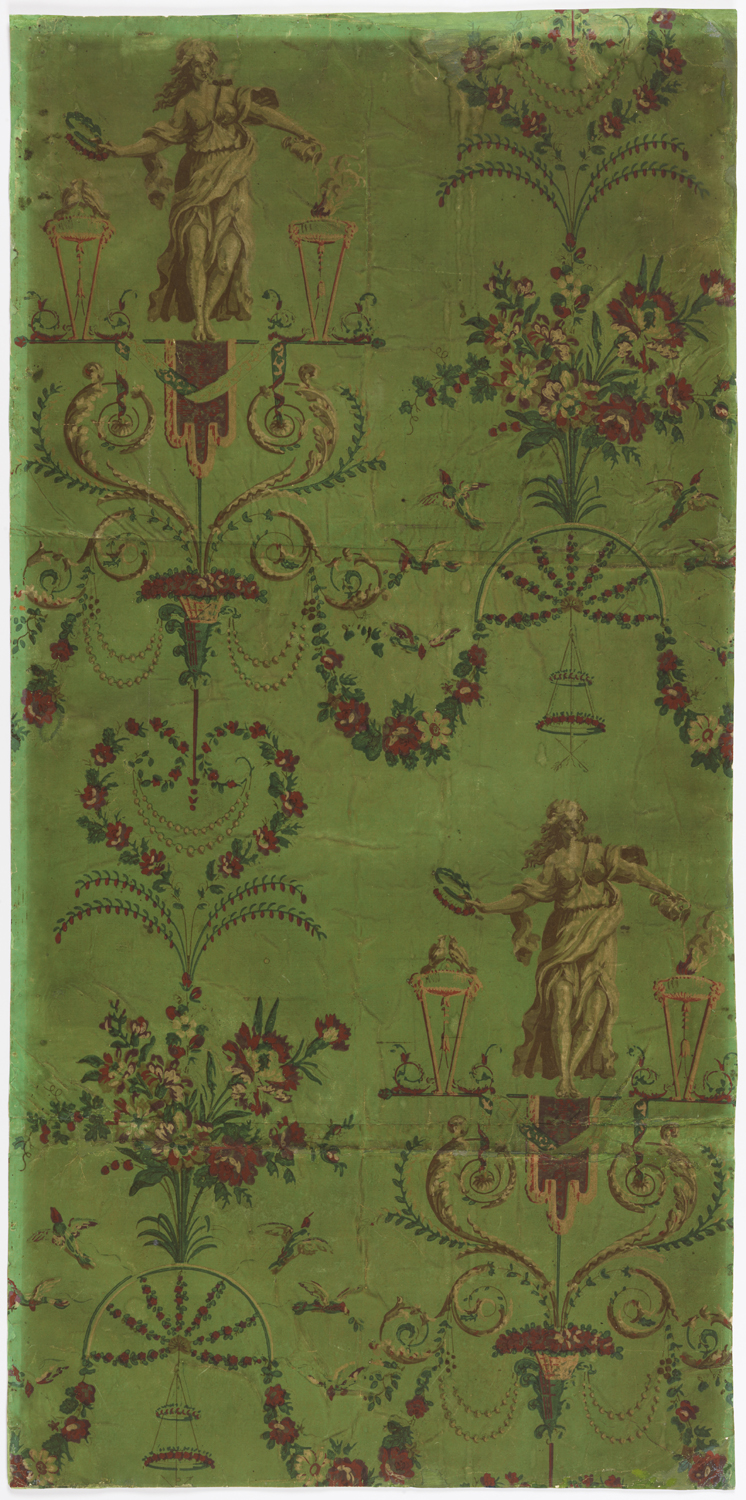This is an arabesque wallpaper design from the late eighteenth century, containing two alternating views. The top view shows a woman, possibly Venus, within an arbor seated on a cross frame stool, playfully bouncing a putto, perhaps Cupid, on her foot. A tall urn sits behind her. A tree grows off to the left, towering...
France started making advancements in wallpaper manufacture in the 1770s, and by the 1780s they were making papers of a quality that has never been surpassed. Réveillon is one of the better-known manufacturers from this period, and was most celebrated for his arabesque designs, which were influenced by the recently discovered wall paintings at Herculaneum...
The period from 1780-1820 produced some beautiful neoclassical wallpapers, of which the arabesque designs are a prime example. These wallpapers were inspired by the excavations of the ruins of Pompeii and Herculaneum which began in 1758. This wallpaper, which has seen better days, is an excellent example. On an arabesque design all of the elements...
This sidewall, now on view in The Jazz Age: American Style in the 1920s, is an excellent example of historicist tendencies in Art Deco design.
Daniel Marot, architect, decorative designer and engraver fled, like many other Huguenot workers, from France to Holland due to the revocation of the Edict of the Nantes in 1685. The Edict had offered measures to ensure religious liberty and its revocation sent shock waves through Protestant communities who were no longer protected. Bringing his talent...
The intricate patterns on this cap precisely fit its shape, suggesting that the fabric was woven specifically for this purpose. Most likely produced professionally, the weaving, embroidery, and tailoring of caps such as this would have been completed in separate workshops. Wigs were common among men of many different social classes in eighteenth century France,...
There is ALOT going on in this arabesque panel attributed to eighteenth-century wallpaper powerhouse, Jean Baptiste Réveillon. The pattern was executed in shades of pink, green, orange and brown on a light-colored ground. As was standard for the time, the design is block printed, and the panel is composed of several smaller sheets of handmade...
When the founders of the museum at Cooper Union began the wallpaper department they were interested in three main collecting areas: gilded embossed leathers, antique French papers, and American bandboxes. This arabesque design was the first wallpaper acquired for the new collection and was produced by the Jean-Baptiste Réveillon factory, one of the premier wallpaper...
